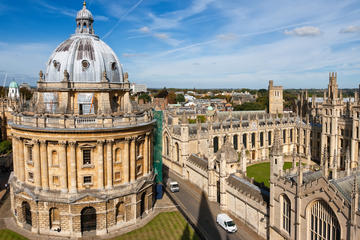A Royal Residence Through The Ages
by Susmita Sengupta
Henry the VIII, who has not heard of him? The English monarch who ruled England from 1509 – 1547, is famously known to everyone as the king who had six wives, and forged the path for English Reformation in his quest for marriage to Anne Boleyn. Also known as Henry Tudor, he was born to Henry VII and Elizabeth York, at Greenwich Palace, in Greenwich, London in 1491.
Hampton Court Palace, located in East Molesey, Surrey, is one of the many palaces of King Henry the VIII but only one of the surviving few. This is the place from where the King and his advisers first sent out letters to Rome threatening to break up with the Catholic Church. This is where he married Kateryn Parr, the final Queen Consort. Henry’s son Edward VI was also born here.
But first here are some details about King Henry the VIII and his political and matrimonial saga. After the death of his brother Arthur, at age ten he became Henry VIII, king of England. At the age of seventeen, he married his brother’s widow, Katherine of Aragon, in the year 1509. Katherine and Henry had one surviving child, Mary but Katherine was unable to provide him with a male successor. Henry’s eyes were now on Anne Boleyn, his queen’s lady-in-waiting. In order to marry Anne, Henry in 1527 began seeking annulment of his marriage to Katherine. It was a long struggle as is well documented in history which culminated in Henry marrying Anne in 1533. For this marriage, Henry broke away with the Catholic Church and the Church of England was formed with the king as its head.
Anne became the mother of Elizabeth I who would go on to become one of the greatest monarchs of English history. In 1536, Anne was executed on charges of adultery and conspiracy against the king. Henry then married Jane Seymour who provided the longed for male heir. Edward VI ascended the throne at barely ten years of age and ruled for about six years before he died of illness. Jane Seymour, Edward’s mother died within two weeks of childbirth and Henry after two years, in 1540, married Anne of Cleves. The marriage, a diplomatic effort, did not work out and it was dissolved within six months. She was awarded the title of “The king’s sister”. Henry’s next wife was Catherine Howard, first cousin to Anne Boleyn and lady-in-waiting to Anne of Cleves. This was once again a love match and Henry and Catherine were married that same year soon after the annulment with Anne of Cleves. The King at forty nine was in love with the teenaged Catherine and lavished gifts of jewels and land to her. Catherine Howard suffered the same fate as her cousin Anne Boleyn as she too was executed in 1542 on charges of adultery. The sixth and last wife of Henry VIII, Kateryn Parr, married him in 1543 and outlived the King who died in 1547. Kateryn Parr passed away in 1548.
On a sunny September morning, my family and I boarded a train from London’s Waterloo station to Hampton Court Palace. By the time we reached Hampton Court, the train had emptied out, thereby showing me that not too many tourists traveled to see this palace. It was a short walk from the station to the large, gilded gates of the palace and we arrived at a virtually empty ticket entrance. This was certainly in stark contrast to the crowds at Tower of London and we were happy to be away from the pressure of the heavy tourist areas of the city.
 We started our visit at the rose garden, also next to which is the kitchen garden. These are but two of the various gardens that cover about sixty acres of landscaped gardens along with about 750 acres of royal parkland. One would need an inordinate amount of time or multiple visits to see all the different garden areas such as The Maze, the Great Vine, the Orangery, the Fountain court gardens to name just a few, all of which would make for a delightful outing for garden enthusiasts. But we were pressed for time and so we decided to focus on the palace instead.
We started our visit at the rose garden, also next to which is the kitchen garden. These are but two of the various gardens that cover about sixty acres of landscaped gardens along with about 750 acres of royal parkland. One would need an inordinate amount of time or multiple visits to see all the different garden areas such as The Maze, the Great Vine, the Orangery, the Fountain court gardens to name just a few, all of which would make for a delightful outing for garden enthusiasts. But we were pressed for time and so we decided to focus on the palace instead.
 The Hampton Court Palace which started out as a manor in 1494 was rebuilt in a grand manner by Cardinal Thomas Wolsey, the Lord Chancellor for Henry VIII. The king took over the palace in 1528 after Wolsey fell out of favor with him because of his failure in procuring an annulment of his marriage to Katherine of Aragon. The palace would now become a Tudor royal residence, an impressive edifice with all the hallmarks of Tudor architecture.
The Hampton Court Palace which started out as a manor in 1494 was rebuilt in a grand manner by Cardinal Thomas Wolsey, the Lord Chancellor for Henry VIII. The king took over the palace in 1528 after Wolsey fell out of favor with him because of his failure in procuring an annulment of his marriage to Katherine of Aragon. The palace would now become a Tudor royal residence, an impressive edifice with all the hallmarks of Tudor architecture.
There was the fabulous gatehouse with the still functioning astronomical clock with its Renaissance bas reliefs. I realized that the palace is clearly divided into parts, each highlighting the eras of the different monarchs who occupied it. Therefore, the palace also has a distinct Baroque side as it functioned as home for later Stuart and Georgian rulers.
 We made our way through the Tudor side, stopping to admire the grandeur of Great Hall, impressive with its ornately carved hammer beam roof and walls covered in elaborate, medieval tapestries, a hallmark of English Gothic architecture. This was followed by the Chapel Royal, a truly, magnificent prayer room with its sumptuously gilded blue pendant vaulted ceiling. The chapel, a splendid specimen of the Tudor style also had renovations done 150 years later in the Baroque form by the famed architect Sir Christopher Wren, builder of the magnificent St. Paul’s Cathedral in London. While reading the leaflet about the chapel, I discovered that the altar cross that we were seeing was made by Sir Edwin Lutyens, the architect famous for planning the city of New Delhi in India and also a lot of its buildings.
We made our way through the Tudor side, stopping to admire the grandeur of Great Hall, impressive with its ornately carved hammer beam roof and walls covered in elaborate, medieval tapestries, a hallmark of English Gothic architecture. This was followed by the Chapel Royal, a truly, magnificent prayer room with its sumptuously gilded blue pendant vaulted ceiling. The chapel, a splendid specimen of the Tudor style also had renovations done 150 years later in the Baroque form by the famed architect Sir Christopher Wren, builder of the magnificent St. Paul’s Cathedral in London. While reading the leaflet about the chapel, I discovered that the altar cross that we were seeing was made by Sir Edwin Lutyens, the architect famous for planning the city of New Delhi in India and also a lot of its buildings.
The kitchens of Henry VIII are the largest such from Tudor England, built by the king to feed his six hundred or so courtiers. There were various rooms filled with mock meat, fish, pies, various kitchen implements and pottery giving us a true picture of the hustle and bustle of everyday kitchen life in medieval England. We finished our tour of the Tudor kitchens after visiting the wine cellar; now better understanding the voracious food habits of Henry VIII and his companions that most of us are familiar with through movies and television shows.
 After a bit of a rest, we decided to tackle the Stuart and Georgian portions of the palace. The Stuart sections are associated with the rulers James I (1566 – 1625), Charles I (1600 – 1649) and William III (1650 – 1702) and Mary II (1662 – 1694) the joint monarchs. These are the Baroque sides and the stark difference in the interiors and architecture from the Tudor Perpendicular Gothic style is immediately apparent. I was intrigued to see the difference in the scale between the State Apartments and the Private Apartments of William III. What caught my eye was the spectacularly eye catching display of arms and armors on the walls of the Guard Room. We saw the stunning Privy Gardens from the windows of the Privy Chamber of William III’s State apartments. The Privy Garden is the most accurate restoration of a Baroque garden with its raised terraces, pyramidal topiaries and intricately carved grass turf where the cut out spaces are filled with gravel.
After a bit of a rest, we decided to tackle the Stuart and Georgian portions of the palace. The Stuart sections are associated with the rulers James I (1566 – 1625), Charles I (1600 – 1649) and William III (1650 – 1702) and Mary II (1662 – 1694) the joint monarchs. These are the Baroque sides and the stark difference in the interiors and architecture from the Tudor Perpendicular Gothic style is immediately apparent. I was intrigued to see the difference in the scale between the State Apartments and the Private Apartments of William III. What caught my eye was the spectacularly eye catching display of arms and armors on the walls of the Guard Room. We saw the stunning Privy Gardens from the windows of the Privy Chamber of William III’s State apartments. The Privy Garden is the most accurate restoration of a Baroque garden with its raised terraces, pyramidal topiaries and intricately carved grass turf where the cut out spaces are filled with gravel.
The highlight in the Georgian apartments is the dining room of George I (1660 – 1727) where I first encountered the art of starched linen napkin folding. Folded cloth was turned into folded art depicting animals, trees, architectural shapes and such displayed on dining tables in European courts. Thus this predominantly German art followed the Hanoverian George to England.
Hampton Court Palace turned out to be quite a serene, wonderful trip to discover the lifestyle of Tudor and later England if one wants to spend a few hours away from busy London.

Private Hampton Court Palace Tour from London
If You Go:
Hampton Court Palace is 35 minutes by train from London’s Waterloo station. The palace gates are a short walk away from the station.
Lots more information is available on the palace’s website.
A new addition is the Magic Garden for families which opened in May 2016.

Susmita Sengupta is a freelance writer who loves to travel. She and her family have traveled to various parts of the USA, Canada, Europe, the Caribbean, Middle East, Southeast Asia and India. She resides in New York City with her family.
All photos are by Susmita Sengupta:
Cobblestoned palace exterior courtyard
A view of the garden with its beautifully manicured yew trees
The Anne Boleyn Gate with its pre-Copernicus astronomical clock
The Great Hall of Henry VIII
The magnificent Privy Gardens


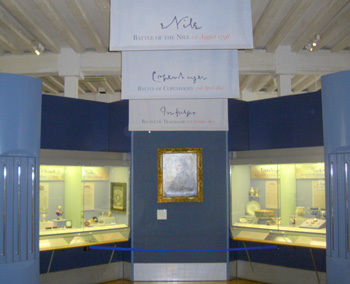
 Nelson was a Royal Navy officer who won a number of naval battles during the Napoleonic Wars. In the Nelson gallery visitors will find artifacts from naval battles such as the Battle of Trafalgar, Battle of the Nile, the Battle of Cape St Vincent and the Battle of Copenhagen. There are a variety of artifacts such as pottery mugs, jugs, vases, pocket watches, porcelain cups and medals from those battles displayed in display cabinets at front of the exhibition.
Nelson was a Royal Navy officer who won a number of naval battles during the Napoleonic Wars. In the Nelson gallery visitors will find artifacts from naval battles such as the Battle of Trafalgar, Battle of the Nile, the Battle of Cape St Vincent and the Battle of Copenhagen. There are a variety of artifacts such as pottery mugs, jugs, vases, pocket watches, porcelain cups and medals from those battles displayed in display cabinets at front of the exhibition.
 After passing through the tunnel, visitors enter the HMS Hear My Story galleries. The galleries include narratives which you can listen to with headphones. Those stories bring you closer than ever before to the real Royal Navy.
After passing through the tunnel, visitors enter the HMS Hear My Story galleries. The galleries include narratives which you can listen to with headphones. Those stories bring you closer than ever before to the real Royal Navy. There are a number of display cases within the galleries showing artifacts from numerous battles and wars. Among them are a Battle of Jutland, Battle of Atlantic and Falklands War display cases. The Jutland case displays a silver model of the HMS Iron Duke, a telescope used during the battle and the remains of a German armor-piercing shell fired at the HMS Tiger among other artifacts
There are a number of display cases within the galleries showing artifacts from numerous battles and wars. Among them are a Battle of Jutland, Battle of Atlantic and Falklands War display cases. The Jutland case displays a silver model of the HMS Iron Duke, a telescope used during the battle and the remains of a German armor-piercing shell fired at the HMS Tiger among other artifacts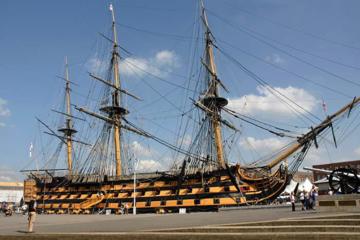
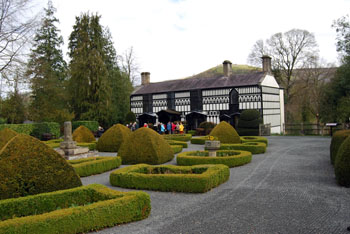
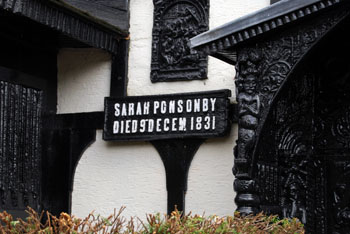 I’d heard the expression ‘Ladies of Llangollen’ before, but wasn’t sure in what context. A girls’ school, maybe? No, they were a pair of women who, back in the 19th Century, were famed far and wide … ‘celebrities’ of the day, if you like. Now, if the ‘Ladies of Llangollen’ lived in this day and age, they would probably be described as ‘offbeat’, eccentric or quirky. That is, if they were noticed at all, for nowadays, it’s accepted that women may take an interest in poetry, literature and politics, and two women living together would hardly raise an eyebrow.
I’d heard the expression ‘Ladies of Llangollen’ before, but wasn’t sure in what context. A girls’ school, maybe? No, they were a pair of women who, back in the 19th Century, were famed far and wide … ‘celebrities’ of the day, if you like. Now, if the ‘Ladies of Llangollen’ lived in this day and age, they would probably be described as ‘offbeat’, eccentric or quirky. That is, if they were noticed at all, for nowadays, it’s accepted that women may take an interest in poetry, literature and politics, and two women living together would hardly raise an eyebrow.
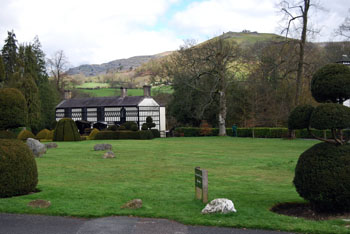
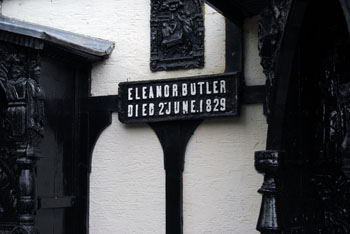 While they wished to lead a life of ‘ … sweet and delicious retirement’, their story attracted a great many visitors, who often stopped by on their way to Snowdonia or Ireland, and their fame rapidly spread. Their visitors included Robert Southey, Sir Walter Scott, Josiah Wedgewood Sir Humphrey Davy and the Duke of Wellington. William Wordsworth also came, and wrote a poem describing Plas Newydd as ‘ … a low roofed cot’ …’ which, reportedly, didn’t find much favour with the ladies, who declared they could write better poetry themselves.
While they wished to lead a life of ‘ … sweet and delicious retirement’, their story attracted a great many visitors, who often stopped by on their way to Snowdonia or Ireland, and their fame rapidly spread. Their visitors included Robert Southey, Sir Walter Scott, Josiah Wedgewood Sir Humphrey Davy and the Duke of Wellington. William Wordsworth also came, and wrote a poem describing Plas Newydd as ‘ … a low roofed cot’ …’ which, reportedly, didn’t find much favour with the ladies, who declared they could write better poetry themselves.
 The house is laid out pretty well as the ladies would have known it, with many memorabilia of their famed visitors. But, what most visitors notice above all is the intricate wood carvings, which the ladies collected, and embellished both the interior and the exterior of the house. ‘Low roofed cot’ it may have been originally, but their constant additions made it well worth the visiting. But, it’s not all down to the Ladies. After their deaths, subsequent owners added their own embellishments. The gardens, although started by the Ladies, owe their present form to a Mr G.H. Robertson, who lived there in the 1890s.
The house is laid out pretty well as the ladies would have known it, with many memorabilia of their famed visitors. But, what most visitors notice above all is the intricate wood carvings, which the ladies collected, and embellished both the interior and the exterior of the house. ‘Low roofed cot’ it may have been originally, but their constant additions made it well worth the visiting. But, it’s not all down to the Ladies. After their deaths, subsequent owners added their own embellishments. The gardens, although started by the Ladies, owe their present form to a Mr G.H. Robertson, who lived there in the 1890s.
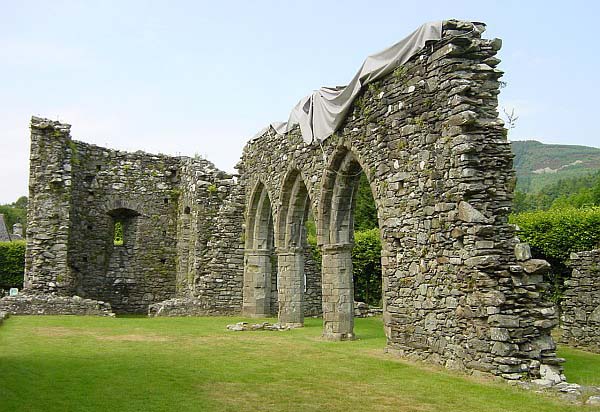
 In search of peace and quiet, I traveled there at Easter, but of course any time of year is good. I stayed with my family in a little stone cottage outside the town of Dolgellau. The cottage was the first source of delight. It was converted from an old 16th century farm building, and although it has been fitted up with modern conveniences – there is no way I would stay anywhere without electricity! – it has kept much of the original character of the place.
In search of peace and quiet, I traveled there at Easter, but of course any time of year is good. I stayed with my family in a little stone cottage outside the town of Dolgellau. The cottage was the first source of delight. It was converted from an old 16th century farm building, and although it has been fitted up with modern conveniences – there is no way I would stay anywhere without electricity! – it has kept much of the original character of the place. The cottage was in a beautiful setting, with simply marvelous views – who can beat the majestic sight of a mountain rising in the distance?
The cottage was in a beautiful setting, with simply marvelous views – who can beat the majestic sight of a mountain rising in the distance?
 Back at Dolgellau, we were in the mood for a traditional tea, and we found just the place. A lovely little tea shop that used to be an ironmongery, with many of the old fixtures and fittings retained. A perfect setting for our traditional cream tea with home baked scones, local blackberry jam and a hot pot of tea. Who could ask for more?
Back at Dolgellau, we were in the mood for a traditional tea, and we found just the place. A lovely little tea shop that used to be an ironmongery, with many of the old fixtures and fittings retained. A perfect setting for our traditional cream tea with home baked scones, local blackberry jam and a hot pot of tea. Who could ask for more? After a couple of days spent in Dolgellau, we decided to change direction. Off we went to Blaenau and the unexpected treat of its steam railway. This was a matter of half an hour’s drive from where we were staying, and we were glad that we had hired a car for a few days, as it was well worth it. Blaenau is another historical town, but of another sort. This was the site of the famous slate mines that sent slate all around the world. Today it is a pretty little town, also with its share of tea shops. Don’t be surprised if the language you hear spoken around you there is not English, for this is still a stronghold of the Welsh language, the beautiful Celtic tongue spoken in the British isles long before the Germanic tribes first landed, bringing with them the languages that would later evolve into English. Welsh is a very different sort of tongue, soft on the ears and a musical pleasure to listen to.
After a couple of days spent in Dolgellau, we decided to change direction. Off we went to Blaenau and the unexpected treat of its steam railway. This was a matter of half an hour’s drive from where we were staying, and we were glad that we had hired a car for a few days, as it was well worth it. Blaenau is another historical town, but of another sort. This was the site of the famous slate mines that sent slate all around the world. Today it is a pretty little town, also with its share of tea shops. Don’t be surprised if the language you hear spoken around you there is not English, for this is still a stronghold of the Welsh language, the beautiful Celtic tongue spoken in the British isles long before the Germanic tribes first landed, bringing with them the languages that would later evolve into English. Welsh is a very different sort of tongue, soft on the ears and a musical pleasure to listen to.
 Back to our walking the next day, we decided to drive for a couple of miles and start our walk from another spot, to see something different. We were to be well rewarded with the beautiful view of Cregennen Lake. Looking out over the water, it was easy to see how the great myths and legends of our forebears arose. I could well picture a hand rising up through the mist shrouded waters of just such a lake, or imagine water spirits and goddesses of the land.
Back to our walking the next day, we decided to drive for a couple of miles and start our walk from another spot, to see something different. We were to be well rewarded with the beautiful view of Cregennen Lake. Looking out over the water, it was easy to see how the great myths and legends of our forebears arose. I could well picture a hand rising up through the mist shrouded waters of just such a lake, or imagine water spirits and goddesses of the land.

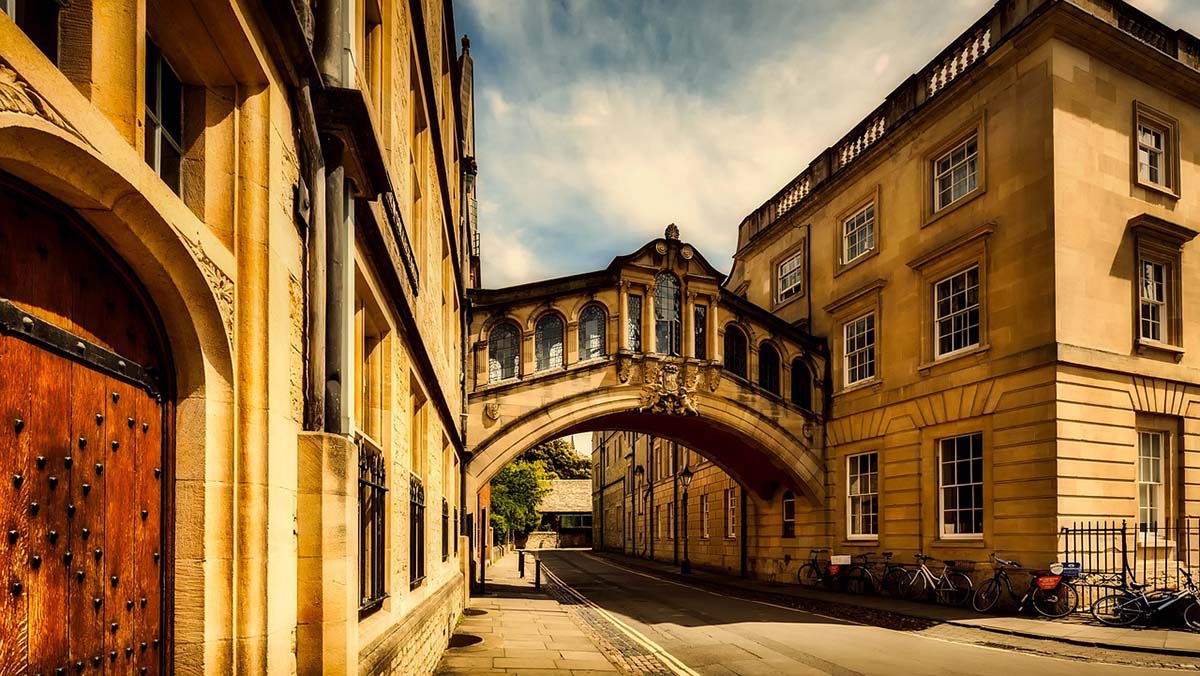
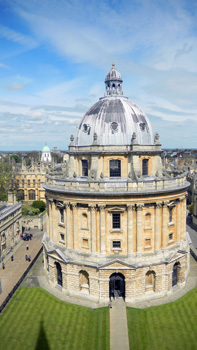 The city of Oxford is spread out before me as I stand on the tower parapet of the Church of St. Mary the Virgin. The staircase is a narrow, twisting spiral, challenging to manoeuvre as I squeezed past people who were coming down. The climb is one hundred and twenty four steps to get to the walkway just below the spire, but once up there I can see a complete three hundred and sixty degree view of Oxford. The buildings are nestled very closely together, made of honey-coloured limestone lit up in the sunshine. It is breezy at the top. I tie my scarf more tightly so that it won’t blow off and flutter over the wall. The stone figures on the walls play tricks on my eyes and look like they are about to crawl down to the next level. They have postures like Gollum crouching, ready to leap from place to place.
The city of Oxford is spread out before me as I stand on the tower parapet of the Church of St. Mary the Virgin. The staircase is a narrow, twisting spiral, challenging to manoeuvre as I squeezed past people who were coming down. The climb is one hundred and twenty four steps to get to the walkway just below the spire, but once up there I can see a complete three hundred and sixty degree view of Oxford. The buildings are nestled very closely together, made of honey-coloured limestone lit up in the sunshine. It is breezy at the top. I tie my scarf more tightly so that it won’t blow off and flutter over the wall. The stone figures on the walls play tricks on my eyes and look like they are about to crawl down to the next level. They have postures like Gollum crouching, ready to leap from place to place. He smiles mischievously. “It is actually called Hertford Bridge and looks more like the Rialto Bridge in Venice. They are often confused. When we get back down to ground level, shall we hunt for a place to eat?” Kevin suggests.
He smiles mischievously. “It is actually called Hertford Bridge and looks more like the Rialto Bridge in Venice. They are often confused. When we get back down to ground level, shall we hunt for a place to eat?” Kevin suggests.
 I walked with my family down the cobblestone streets to a charming pub called “The Eagle and Child”. The building is lopsided due to its age, and several additions have been made to it over time, so the rooms are angled in odd ways. The little nooks and crannies have intimate spaces filled with small tables and chairs arranged for private conversations and philosophical discussions. The walls are covered with paintings and sketches of famous personages like J.R.R. Tolkien and C.S. Lewis. I was in awe that I walked on the floor and sat in the building where these creators of famous literature regularly met.
I walked with my family down the cobblestone streets to a charming pub called “The Eagle and Child”. The building is lopsided due to its age, and several additions have been made to it over time, so the rooms are angled in odd ways. The little nooks and crannies have intimate spaces filled with small tables and chairs arranged for private conversations and philosophical discussions. The walls are covered with paintings and sketches of famous personages like J.R.R. Tolkien and C.S. Lewis. I was in awe that I walked on the floor and sat in the building where these creators of famous literature regularly met. “Good afternoon everyone and welcome to the Bodleian Library.” The guide greets us and beckons the group to come closer. “You are probably curious about my accent. You can tell that I am not from here, I am American. I came to Oxford for a visit several years ago and fell in love with the city.” She says with a warm smile. “I decided that I wanted to be a part of it, so I am a volunteer in the Bodleian and give tours. I am excited to begin and share as much information about it as I can in this brief hour. Let’s begin, this room was used as the hospital in the Harry Potter movies.” She keenly announces.
“Good afternoon everyone and welcome to the Bodleian Library.” The guide greets us and beckons the group to come closer. “You are probably curious about my accent. You can tell that I am not from here, I am American. I came to Oxford for a visit several years ago and fell in love with the city.” She says with a warm smile. “I decided that I wanted to be a part of it, so I am a volunteer in the Bodleian and give tours. I am excited to begin and share as much information about it as I can in this brief hour. Let’s begin, this room was used as the hospital in the Harry Potter movies.” She keenly announces. Across the square from the Bodleian is the Sheldonian Theatre built by Sir Christopher Wren. To my surprise the theatre is not used to perform plays, but hosts concerts and degree ceremonies.
Across the square from the Bodleian is the Sheldonian Theatre built by Sir Christopher Wren. To my surprise the theatre is not used to perform plays, but hosts concerts and degree ceremonies.
